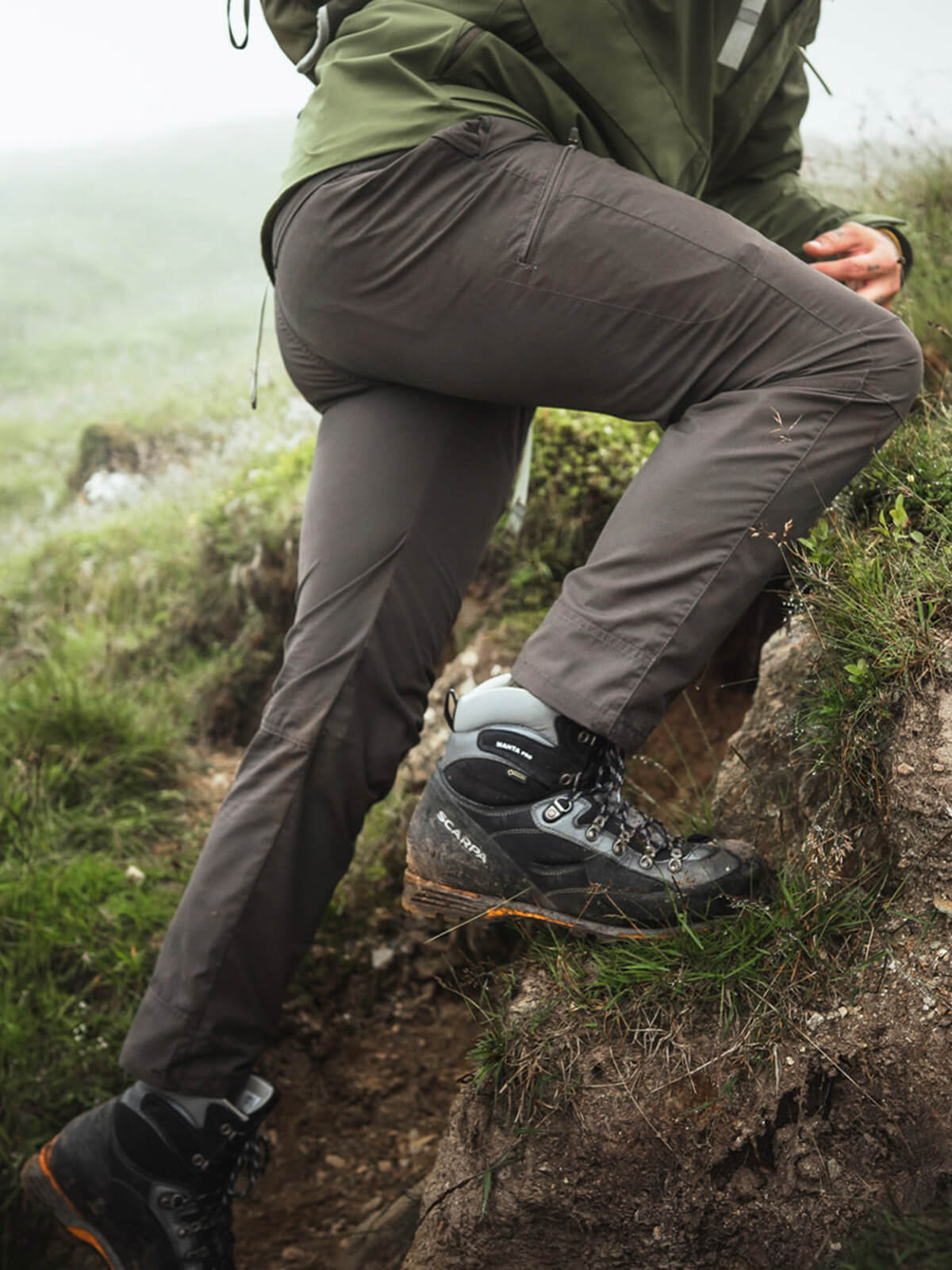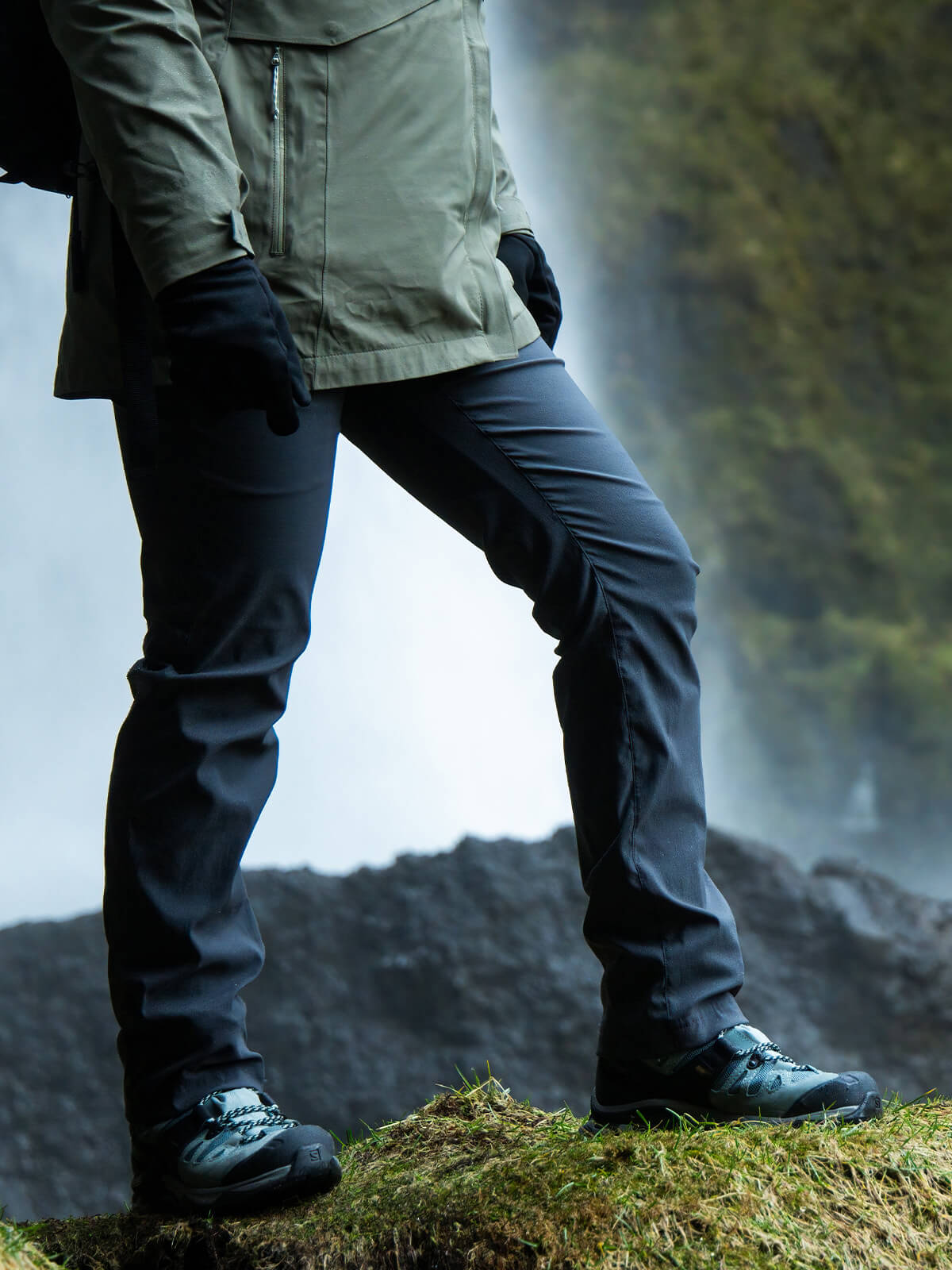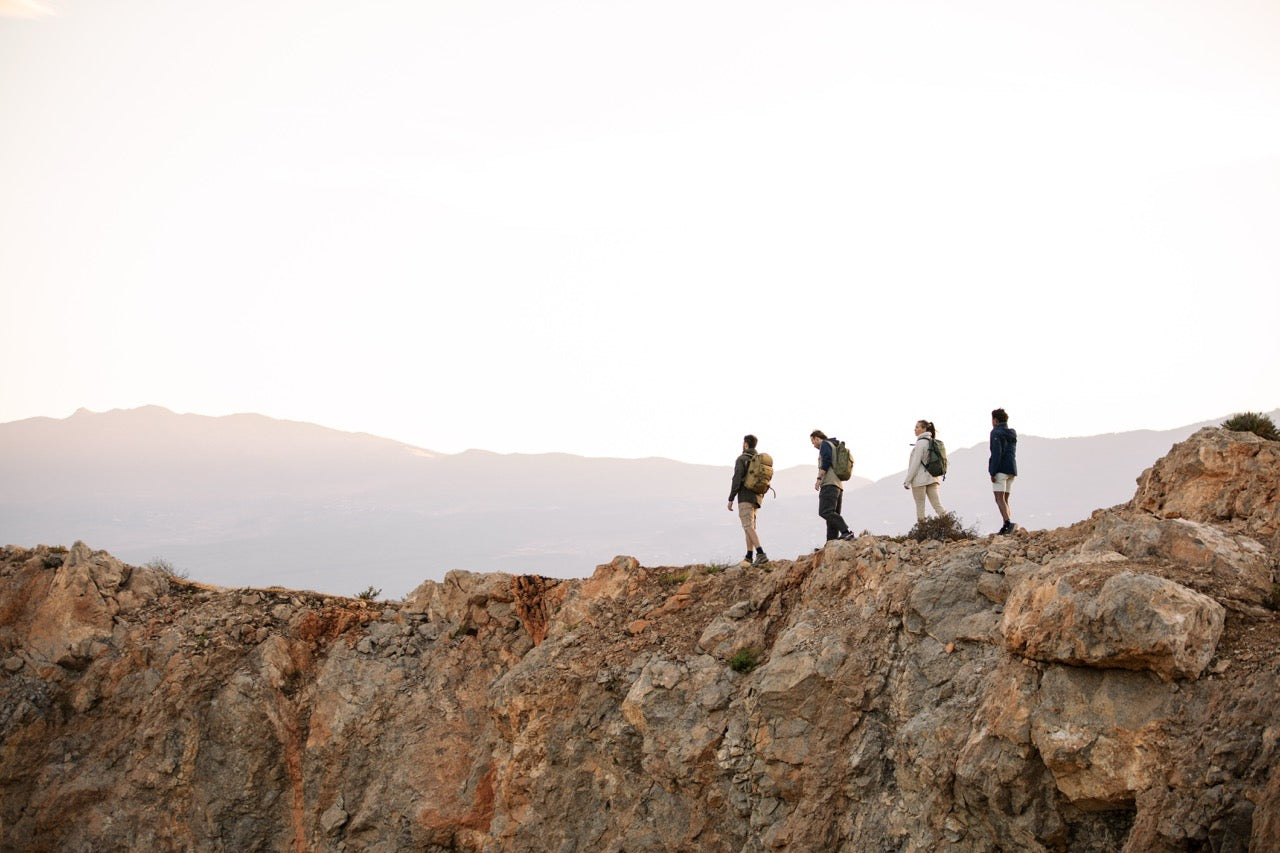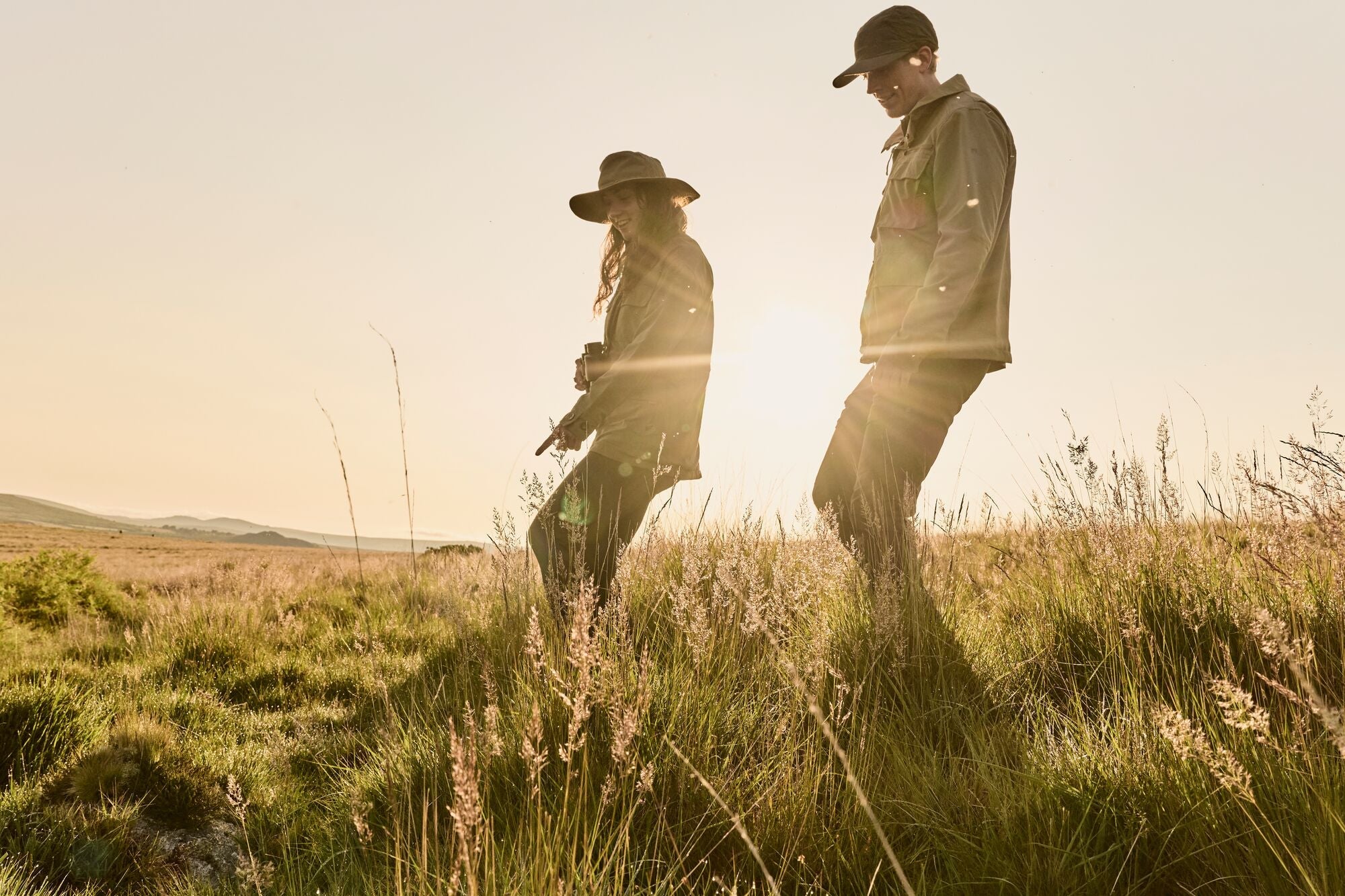
Bitten by Adventure: The Real Risks of Bug Bites (and How to Outsmart Them)
Adventure doesn’t always bite—but sometimes the bugs do.
If you're a traveler, hiker, camper, or just someone who loves disappearing into the wilderness for a while, you’ve likely accepted the occasional mosquito buzz or tick check as part of the deal. But what many don’t realize is just how serious a single bug bite can be—and how easily it can happen, even on a quick weekend getaway.
So before you lace up your boots and disappear into the wild unknown, let’s talk about the tiny, biting threats that tag along on your journeys—and how to protect yourself with Craghoppers’ Insect Shield® gear that keeps the bugs out of your adventure.
Not-So-Fun Fact: The Deadliest Animal in the World Has Six Legs
That’s right. Mosquitoes are the most dangerous animals on the planet, responsible for over 700,000 deaths each year. It’s not the bite that does it—it’s what they carry.
Many biting insects transmit vector-borne diseases, which means they’re little flying syringes carrying viruses, bacteria, or parasites from one host to another. When you’re trekking through jungle trails, crossing savannahs, or just camping in humid woods, you’re stepping into their territory.
Here are a few of the most common (and most concerning) insect-borne diseases you might encounter—and where they lurk.
🦟 Malaria
Where? Sub-Saharan Africa, Southeast Asia, Central & South America
Spread by: Anopheles mosquitoes
Symptoms: Fever, chills, sweats, vomiting, and fatigue
How serious? Extremely. If untreated, malaria can become life-threatening in just days.
For travelers heading off-grid in tropical zones, malaria is the big one. Some forms are drug-resistant, and while preventative medication exists, it’s not foolproof. Prevention is key, especially at dawn and dusk, when Anopheles mosquitoes are most active.
🦟 Dengue Fever
Where? Caribbean, South America, Southeast Asia, Pacific Islands
Spread by: Aedes mosquitoes
Symptoms: High fever, rash, severe joint pain (nicknamed “breakbone fever” for a reason)
How serious? Very. Severe cases can cause hemorrhagic fever and shock.
Unlike malaria, dengue-carrying mosquitoes strike during the day. They're urban-savvy, often breeding in small puddles or containers in cities and towns, meaning even hotel balconies and city parks can be risky zones.
🦟 Zika Virus
Where? South & Central America, parts of Asia and Africa
Spread by: Aedes mosquitoes
Symptoms: Mild or unnoticeable in most, but extremely dangerous during pregnancy due to birth defect risks
How serious? Concerning enough for several governments to issue travel warnings for pregnant travelers.
Zika made headlines for good reason. Though symptoms are often mild, its long-term effects—especially on developing fetuses—make it a critical concern for anyone considering travel in affected areas.
🪳 Chagas Disease
Where? Central & South America, increasingly reported in the U.S.
Spread by: Triatomine bugs (a.k.a. “kissing bugs”)
Symptoms: Swelling at the bite, fever, fatigue, then potentially years later—serious heart or digestive issues
How serious? Long-term and life-threatening if left untreated.
Kissing bugs often bite around the mouth while you sleep (romantic, right?). They defecate near the bite, and scratching helps spread the parasite into your bloodstream. Not something you want to wake up to in your tent.
🪲 Leishmaniasis
Where? Middle East, South America, parts of Africa and Asia
Spread by: Sandflies
Symptoms: Skin ulcers or, in more severe forms, organ damage
How serious? Disfiguring and potentially deadly.
Sandflies are tiny—about one-third the size of a mosquito—and they love feeding in shady, forested areas or around livestock. If you’re the one pitching a tent near the herd? You might be the main course.
🕷️ Lyme Disease
Where? United States (Northeast, Midwest, Pacific Northwest), Europe
Spread by: Blacklegged ticks
Symptoms: Bullseye rash, fever, joint pain, neurological issues if untreated
How serious? Debilitating if not caught early.
Ticks don’t fly or buzz, so they’re easier to overlook—but just as dangerous. Many Lyme cases go undiagnosed until long-term symptoms set in. If you’ve ever bushwhacked in New England or hiked the Appalachian Trail, you know the post-hike tick check is no joke.
🕷️ Rocky Mountain Spotted Fever
Where? Americas (especially the southeastern U.S. and Central America)
Spread by: Ticks
Symptoms: Sudden fever, rash, nausea
How serious? Potentially fatal if not treated quickly.
It’s one of the fastest-progressing tick-borne diseases and, without early antibiotics, can be deadly within a week. Early signs? A rash that spreads from wrists and ankles to the rest of the body—and a sense that something’s just really wrong.
🦠 Quick Bite: Other Nasty Infections
While the above are the headline-grabbers, lesser-known threats like Japanese Encephalitis, Yellow Fever, Tick-borne Encephalitis, and Filariasis are real risks in specific regions. And don’t forget about allergic reactions or secondary infections from scratching—especially when you’re miles from the nearest medical help.
So… Should You Stay Home? Heck No.
We’re not here to scare you into skipping the next adventure—we’re here to help you be ready for it.
Because here’s the thing: most bug-borne illnesses are 100% preventable.
It all comes down to what you wear, how you prepare, and knowing how to outsmart the insects.
🛡️ Gear Up: How Insect Shield® Protects You
This is where Craghoppers’ Insect Shield® clothing steps in.
Our gear is treated with permethrin, a long-lasting, invisible insect repellent that’s built right into the fabric. Unlike sprays, it doesn’t wear off with sweat or humidity. It’s EPA-registered, family-safe, and proven to repel mosquitoes, ticks, ants, flies, chiggers, and midges.
It’s the kind of armor that doesn’t weigh you down—because staying protected shouldn’t mean sacrificing comfort or packing more gear.
Whether you’re hiking through humid Costa Rican rainforests or camping in the Adirondacks, Insect Shield® gives you peace of mind so you can focus on the views—not the bugs.
🧭 Travel Smart: Quick Tips to Keep Bugs at Bay
Even with bug-proof gear, some smart habits go a long way:
-
Avoid peak biting hours: Mosquitoes love dawn and dusk. Plan hikes accordingly.
-
Wear light-colored clothing: Darker fabrics attract more insects.
-
Use EPA-registered repellents on exposed skin (and reapply often).
-
Sleep under permethrin-treated nets or in sealed tents.
-
Do tick checks at the end of every day—especially around the ankles, scalp, and waistband.
-
Avoid scented lotions or perfumes, which attract bugs.
-
Stay on the trail—ticks thrive in tall grass and underbrush.
The Bottom Line: Nature Is Wild. Stay Wilder.
Adventure will always come with risk—that’s part of the thrill. But that risk shouldn’t include losing months of your life to a preventable disease or battling chronic symptoms from one overlooked bite.
So pack smart. Know your enemies. And wear the kind of gear that lets you explore more, swat less, and come home with stories instead of scars.
Explore Insect Shield® gear → Shop Craghoppers Insect Shield Collection
Because when it comes to adventure, the only thing that should bite is the challenge.





Leave a comment
This site is protected by hCaptcha and the hCaptcha Privacy Policy and Terms of Service apply.